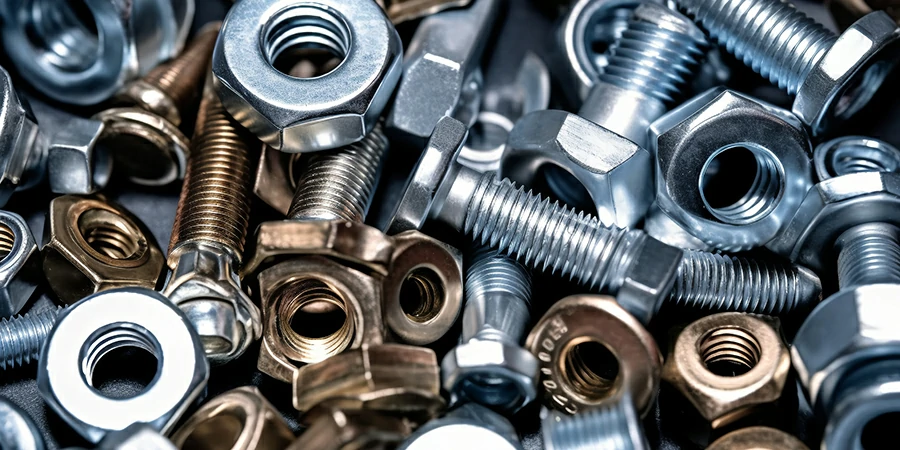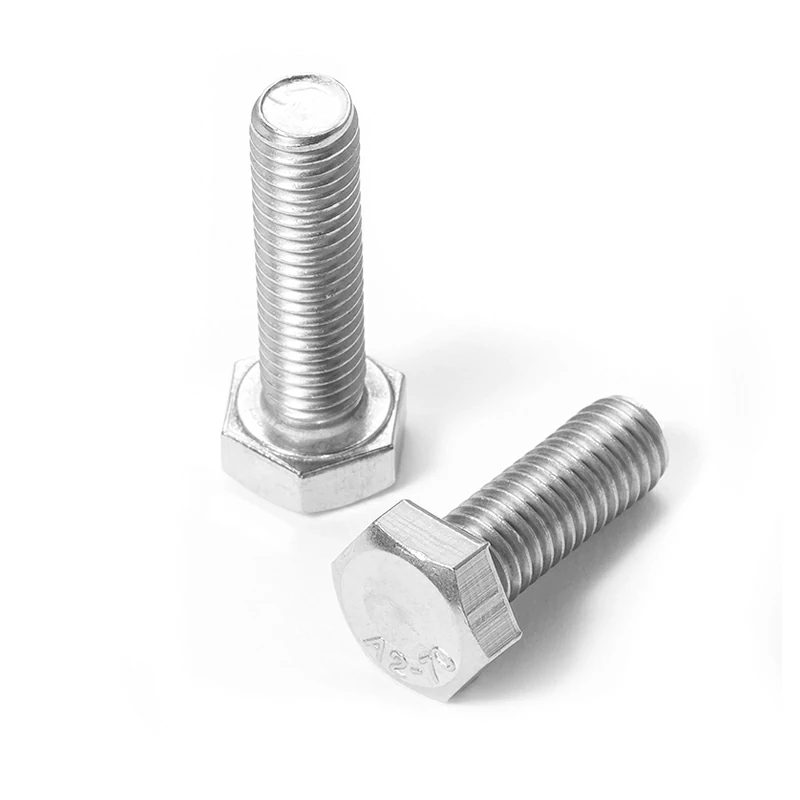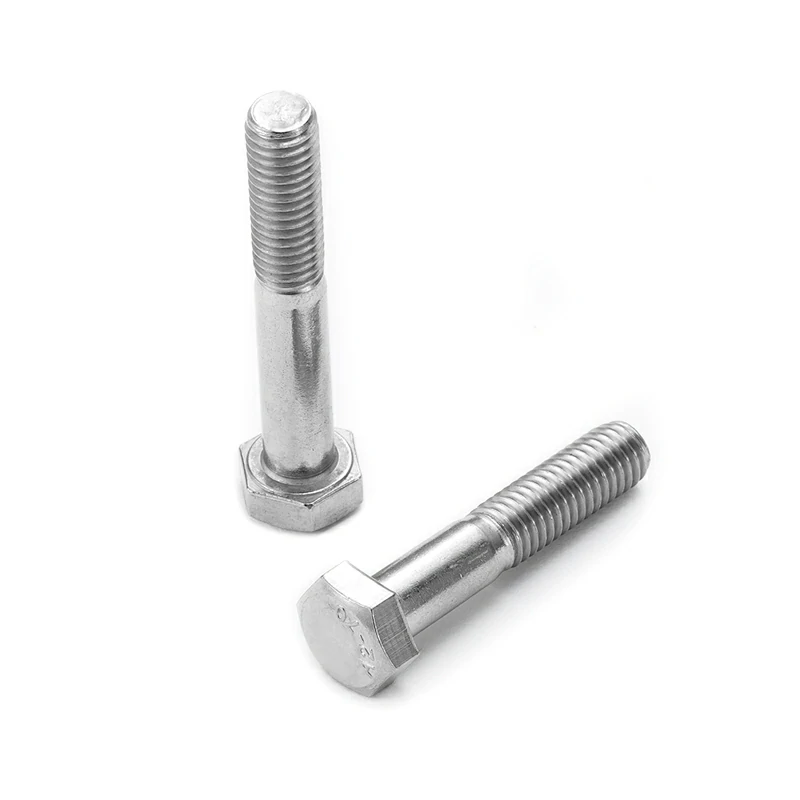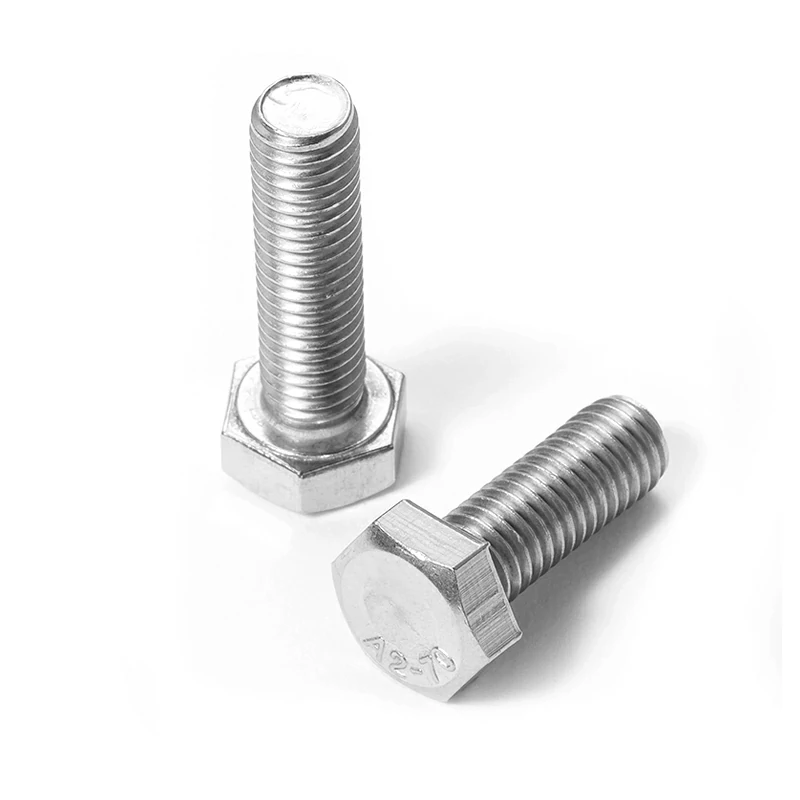Fasteners such as bolts, screws, and nuts are essential components in a wide range of applications. The strength of fasteners is critical for ensuring the safety, durability, and reliability of structures and mechanical systems. This document outlines the key measures and standards that define fastener performance, including tensile strength, yield strength, shear strength, and fatigue strength, alongside common grading systems like SAE, ISO, and ASTM.
Key Measures of Fastener Strength
1. Tensile Strength (Ultimate Tensile Strength – UTS)
Tensile strength refers to the maximum amount of axial (pulling) force a fastener can withstand before it breaks. This property is essential in applications where fasteners are exposed to significant pulling forces. For instance, a Grade 8 bolt typically has a tensile strength of around 150,000 psi, making it ideal for heavy-duty applications.
2. Yield Strength
The yield strength of a fastener indicates the stress point at which a material begins to permanently deform. It is crucial to choose fasteners that won’t yield (permanently deform) under the expected load to maintain the integrity of the structure.
3. Shear Strength
Shear strength is the maximum force a fastener can endure before failing due to shear stress. This property is particularly important in bolted joints subjected to transverse or lateral loads.
4. Fatigue Strength
Fatigue strength refers to a fastener’s ability to withstand failure from repeated or cyclic loading. In environments subject to constant vibrations or dynamic forces, such as machinery or vehicles, selecting fasteners with excellent fatigue resistance is crucial.
Factors Influencing Fastener Strength
The overall strength of a fastener is determined by several factors that should be carefully considered when selecting the appropriate hardware for an application:
1. Material Composition:
The material used – whether carbon steel, stainless steel, alloy steel, or even titanium – directly impacts the fastener’s tensile, yield, shear, and fatigue strength. Alloy steel, for instance, is often heat-treated to enhance strength, while stainless steel is favored for its corrosion resistance.
2. Hardness:
Harder materials generally exhibit higher tensile and yield strengths. Fasteners made from high-hardness materials are designed to withstand higher loads without deformation. Heat treatment processes such as quenching and tempering are employed to achieve the desired hardness.
3. Size and Diameter:
Larger diameter fasteners have a greater load-bearing capacity due to the increased cross-sectional area. When selecting fasteners, it’s crucial to account for the expected load and ensure the size is sufficient to prevent failure.
4. Thread Design and Tensile Stress Area:
The design of the threads, including the pitch, spacing, and depth, influences the fastener’s performance under load. Coarse threads are easier to install and more resistant to stripping, while fine threads offer superior tensioning capabilities and are ideal for high-strength applications.
5. Manufacturing Process:
Processes like thread rolling (especially after heat treatment) can significantly enhance a fastener’s fatigue life and overall strength, providing greater resistance to repeated stresses.
Fastener Strength Grading Systems
Fasteners are classified into different grades or property classes based on their strength. These classifications are governed by various national and international standards, which help ensure the fasteners meet the required mechanical properties for different applications.
SAE (Society of Automotive Engineers) Grades (U.S. Standards)
Grade 2: Low strength, typically used in non-critical applications (no markings).
Grade 5: Medium strength, commonly found in automotive and machinery applications (marked with 3 radial lines).
Grade 8: High strength, suitable for heavy-duty machinery and critical applications (marked with 6 radial lines).
ISO (International Organization for Standardization) / Metric Property Classes
Class 8.8: Comparable to SAE Grade 5, suitable for medium-strength applications.
Class 10.9: Equivalent to SAE Grade 8, used for high-stress environments.
Class 12.9: Very high strength, often used in critical applications with extreme load requirements.
ASTM (American Society for Testing and Materials) Standards
Fasteners adhering to ASTM standards (such as ASTM A307, A325, A490) are designed for structural and industrial applications, specifying mechanical properties and material composition for reliable performance under heavy loads and stress.

Selecting the Right Fastener Strength for Your Application
When choosing a fastener, it is critical to consider various factors such as load requirements, environmental factors, and safety margins. Here’s how to ensure you choose the correct fastener for your application:
1. Load Requirements:
Calculate the expected tensile, shear, and fatigue stresses the fastener will endure. Ensure the selected fastener has an appropriate strength rating to handle both static and dynamic loads.
2. Environmental Factors:
Exposure to harsh environments, such as high temperatures, corrosive substances, or vibrations, can affect fastener performance. For such conditions, materials like stainless steel or titanium are ideal, offering resistance to corrosion and superior strength.
3. Safety Factors:
Always factor in a safety margin (typically 2x or more) when selecting fasteners. This ensures that even under unforeseen stresses, the fastener will maintain its integrity over time.
The strength of fasteners – whether tensile strength, yield strength, shear strength, or fatigue strength – is a crucial consideration in ensuring the safety, reliability, and longevity of structures and machinery. By understanding the SAE, ISO, and ASTM grading systems, as well as factors like material composition, size, and thread design, you can select the right fasteners for your specific application. Always account for load requirements, environmental conditions, and a proper safety factor to ensure the durability of your assembly.
If you need fasteners that meet the highest standards for strength and reliability, look for products marked with SAE, ISO, or ASTM ratings to ensure the best performance for your project.



